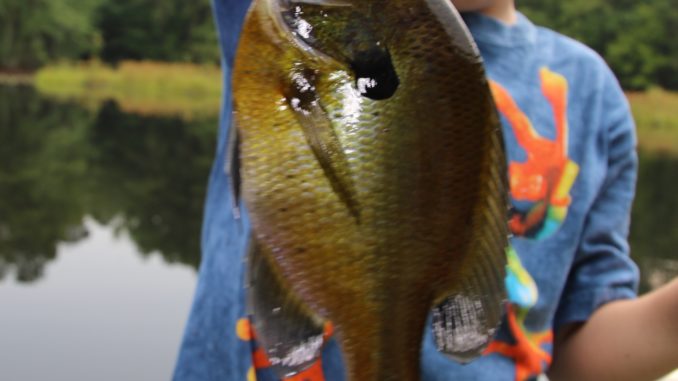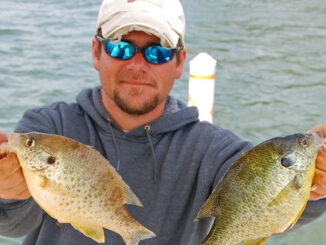
Local angler shares his secrets for river bream
Bream fishing on a river is a different ball game than fishing in a pond or lake, but it can be just as fruitful and rewarding for anglers who don’t mind fishing in these waterways, which are often seen more as catfish waters than bream holes.
Ken Nutter of Sumter regularly fishes the Wateree River and said he often sees catfish anglers at the boat landing that are surprised to hear that he catches bream there. He said he has even had to open his cooler to stop the laughter from some anglers’ reactions when they find out he’s been bream fishing. But, he said, that definitely puts a stop to any laughter or doubts, because he has plenty of luck catching his share of bream here.
“It’s really not that much different than fishing in a lake or pond, but you do have a lot more current to deal with in a river,” said Nutter. In his opinion though, bream fishing in a river is easier than it is in still water.
“When you’re fishing a big body of still water that is full of structure, it can be confusing when thinking of where to even start for bream. But when you have strong current, you can immediately cross off a good portion of that body of water, which narrows down the places to fish. The bream aren’t going to be in the middle of the river or where the current is running strongest. So right off the bat, you’ve figured out where NOT to fish, which is a big part of figuring out where you should be concentrating your efforts,” he said.
Nutter’s favorite fishing holes on any river are in the interior bends. “Especially on really sharp curves in the river, the interior bends hold the most slack water. The current in the outer bends is usually really fast, but the interior bends are just the opposite. Sometimes it’s just as slack as any water you’ll find in a pond,” he said.
Using crickets is always a good bet in these holes, and Nutter said he will suspend them under corks, but also will fish them on the bottom. He does the same thing with waxworms and nightcrawlers. “You can’t beat live bait in these holes. Fishing on the bottom here surprises a lot of people, and you will get hung up here and there on structure, but for the most part, it’s not a problem, and you’ll catch a lot of shellcrackers on the bottom, and mostly bluegills and redbreast with the cork,” he said
Another tactic Nutter uses is fishing artificial lures where the current and the slack water meet. “I like to use Beetlespins and Mepps spinners here. Even though bream don’t especially like the hardest-running current, they do like to move between some current and slack water. They get a lot of food washed to them in the current, but they don’t necessarily want to spend all day in it so they seem to move in and out of it throughout the day. Retrieving an ultralight lure through these areas is good, and usually catches the bigger bream,” he said.
Nutter said anglers should also fish in areas with lots of debris stacked up. “Big trees that have fallen in and are on the surface usually trap other debris that washes into them. Sometimes it can look like a junkyard with other tree branches, piles of leaves, and even some garbage stacking up. There is also often a filmy cloud on the surface there. It doesn’t make for a pretty picture, but bream love to get under all that stuff. This is where I love to cast a cork with a cricket underneath it. The current will carry the cork into that film on top, and the film will actually stop the cork from moving further, but the current will keep moving the cricket. Once the cricket swings under that debris, it almost always gets a bite,” Nutter said.




